To obtain a large crop of high-quality potatoes, it is important to timely and thoroughly clean the site from weeds, the presence of which can ruin even the best seedlings. This is primarily due to the significantly lower demands of weeds on the amount of nutrients and various other growth factors. That is why weeds are characterized by high competitiveness – cultivated plants are often not able to compete with them, which means they will wither away. In addition to such a significant effect on yield, weeds can cause problems during harvesting and reduce the quality of the harvested potatoes. Pests often breed on weeds, among which there are many pathogens of plant diseases, both viral and fungal. To top it off, with a high level of weediness in the area, potatoes can become ill with late blight. All this impressive list of problems has a solution – the use of herbicides on potatoes. Below will be described in detail what includes the treatment of potatoes with herbicides or how to get rid of weeds.
Application of herbicides
Herbicide treatment is a chemical treatment, so it has many opponents. Of course, there is an alternative method of weed control – mechanical. However, in addition to its incredible labor intensity and duration, it has several other disadvantages, namely a high level of risk of damage to the potato bush or its root system and drying out of the soil.
In turn, the use of herbicides can completely eliminate the transmission of viruses, which is provoked by damage to the bushes. But the most important advantage of the chemical method of processing is speed, comparative ease. However, if the area is small, it is still worth giving preference to a mechanical method of weed control. Also, do not use herbicides on shallowly planted potato tubers or after frost. Chemical weeding should be carried out with healthy, pest-free plants.
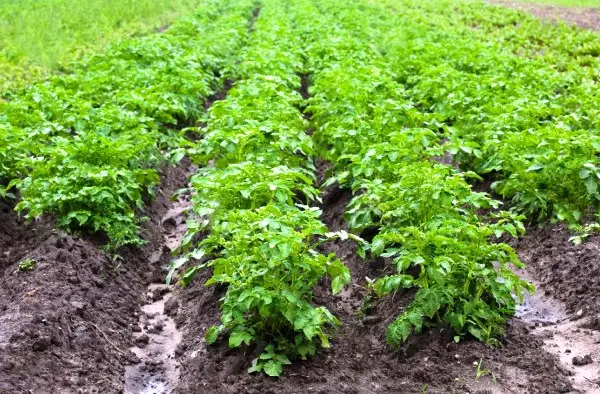
Given the prevalence of the problem of weed control in planting areas, it is not surprising that every year the number of potato herbicides offered to the consumer is constantly growing. Only the division into different types remains unchanged, thanks to which everyone can choose exactly the remedy, the use of which will bring the greatest effect.
There are several types of classification of herbicides for potatoes:
- According to the peculiarities of the impact on the weed plant – contact and systemic. The first act only in the place that had to be processed. Such preparations are intended for young one-year-old weeds and are not able to fight perennial weeds, the roots of which are too deep and do not fall under the influence of the preparation. In turn, systemic herbicides are designed to destroy both the ground and underground parts of the weed.
- According to the conditions of application – soil (pre-emergence) and leaf (post-emergence). As is clear from the names, the former are used before germination or even before sowing itself. Such herbicides act on the roots and seeds of the plant. The effect of leaf preparations extends to the ground parts of the plant.
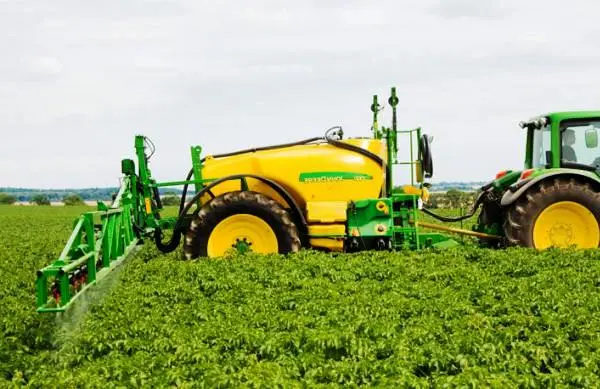
- By the scale of action – selective and continuous action. Preparations of the first category affect weeds of one crop, the second – destroy all vegetation in a certain area of action. When using continuous herbicides on potatoes, all weeds will be destroyed within a week after treatment. This type is good for pre-treatment of the area before planting. However, it is important to understand that at high doses, even selective drugs begin to act as systemic ones.
Popular tools
Among the variety of proposed tools, there are several that confidently occupy a leading position in terms of the frequency of their use.
It is to herbicides for potatoes with the best reviews that Antiburyan belongs. This drug is used to combat all types of weeds. The area should be treated every 5-10 days, a maximum of three times.
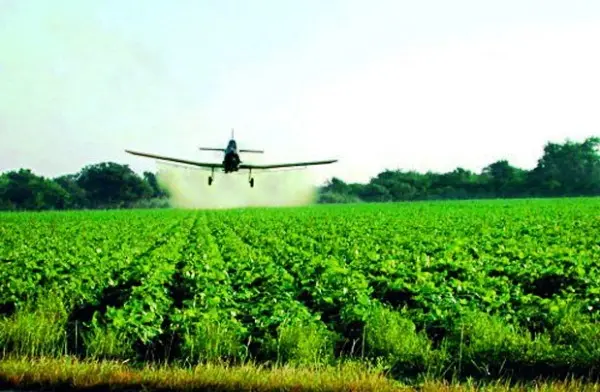
“Arsenal” is able to destroy not only weeds, but also unwanted bushes or even trees. The site is treated with this herbicide only once, in the first half of summer.
“Panther” fights weeds of the cereal family, which often parasitize in areas with potatoes. This herbicide is also treated once. The main advantage of “Panther” over many other drugs is the resistance to rain, which is activated an hour after use.
“Titus 25” stands out among the rest for its quality and versatility. It is able to fight both perennial and annual weeds. Herbicide perfectly interacts with potatoes. Treatment with “Titus 25” is carried out once.
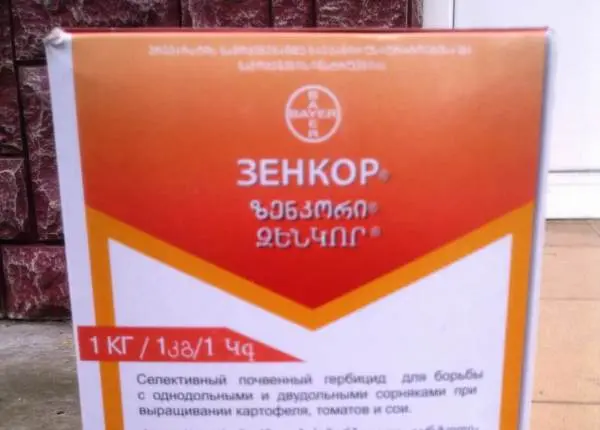
“Zenkor 70 WG” belongs to pre-emergence herbicides for continuous action of potatoes. Especially good in the fight against dandelion, mustard, quinoa and ragweed. Zencor is a unique herbicide for potatoes. It will not have a negative impact on the nutritional properties of tubers – potatoes will not be saturated with chemically harmful substances. Also a useful feature of Zenkor is the absence of the effect of this drug on subsequent plantings.
Roundup Max is often used to kill wheatgrass. The herbicide is fully active even under adverse weather conditions – both in fog and in drought, its effect is equally effective.
“Chistopol” has a particularly good effect on thistle, birch. Also used against wheatgrass. The area should be treated once. It is possible to use the drug to combat shrubs. An analogue drug is “Hurricane Forte 500 SL”, which is also used to combat thistle and birch.
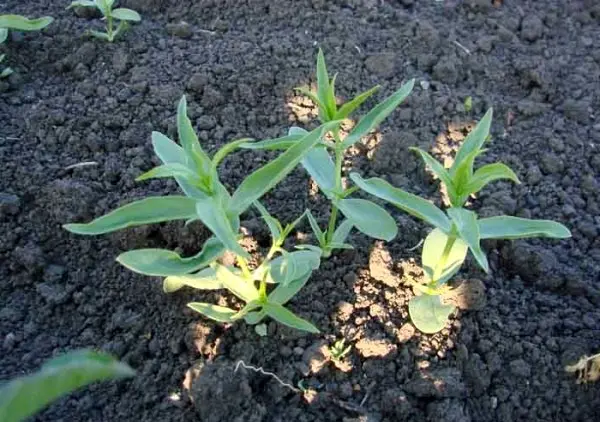
“Totril 225EC” – a drug of very broad action and is able to destroy various types of weeds. However, it cannot be used in the greenhouse and after precipitation.
“Lazurit” copes well with annual weeds that parasitize potato plantings. Differs in long action on the weed plants growing further. The best period for the use of “Lazurit” is the time of emergence of 80% of potato seedlings.
Processing rules
The application of herbicides on potatoes is carried out using sprayers. They are often fixed on ground vehicles, less often aircraft are used for irrigation. The substances used in this way should be of low toxicity, however, despite this, elementary safety precautions should be observed. First of all, it is necessary to protect the respiratory organs with a special respirator mask so that when spraying the drug particles do not enter the body. To avoid negative effects on the skin after the procedure, you must immediately wash all exposed skin with soap and water. And, of course, it is forbidden to smoke or eat while spraying.
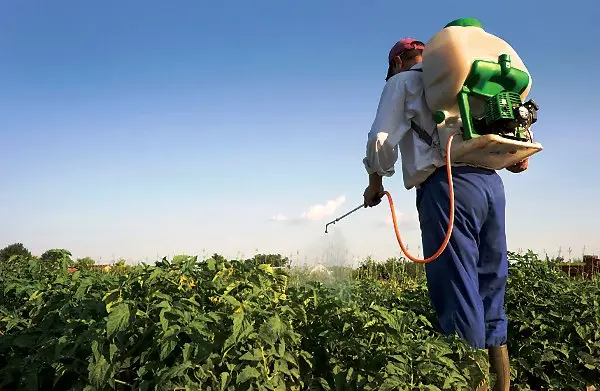
In addition to these simple rules, following which you will maintain your health, there are several more features associated with the use of herbicides on potatoes. First of all, this concerns directly the preparation of the working solution of the drug. To do this, it is better to use softened water and a container made of non-metal. Otherwise, the effectiveness of herbicides will be significantly reduced. Also, you should not prepare a working solution for the future – it is stored for no more than a week, always in a cool place and in a plastic or glass container. In the case of longer storage, all the beneficial properties of the herbicide will be lost.
It is important to keep an eye on the equipment that will be used to spray potato herbicides. For uniform application, the optimal pressure is up to 1,5 atm and the use of a special spray tip. After completion of the procedure, the device should be thoroughly rinsed with water.
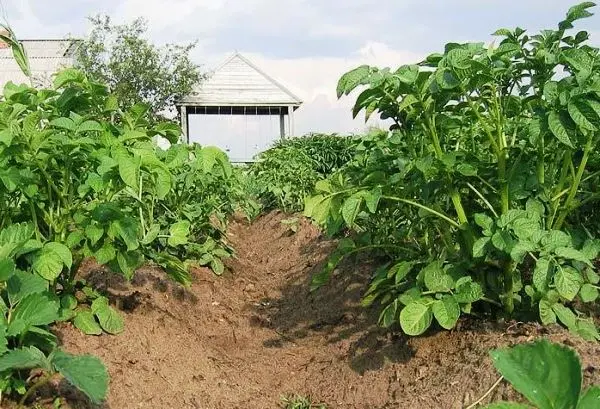
When deciding whether to use chemicals, it is important to be aware of the level of sensitivity of planted potato varieties to herbicides. For example, Yavar, Site, Lugovskoy and many others have an increased susceptibility to them. In this case, you should either choose the most gentle and non-toxic drug, or completely refrain from using them.
Video “Weed control with herbicides”
In the video – an overview of the most popular herbicides for use in the suburban area.









